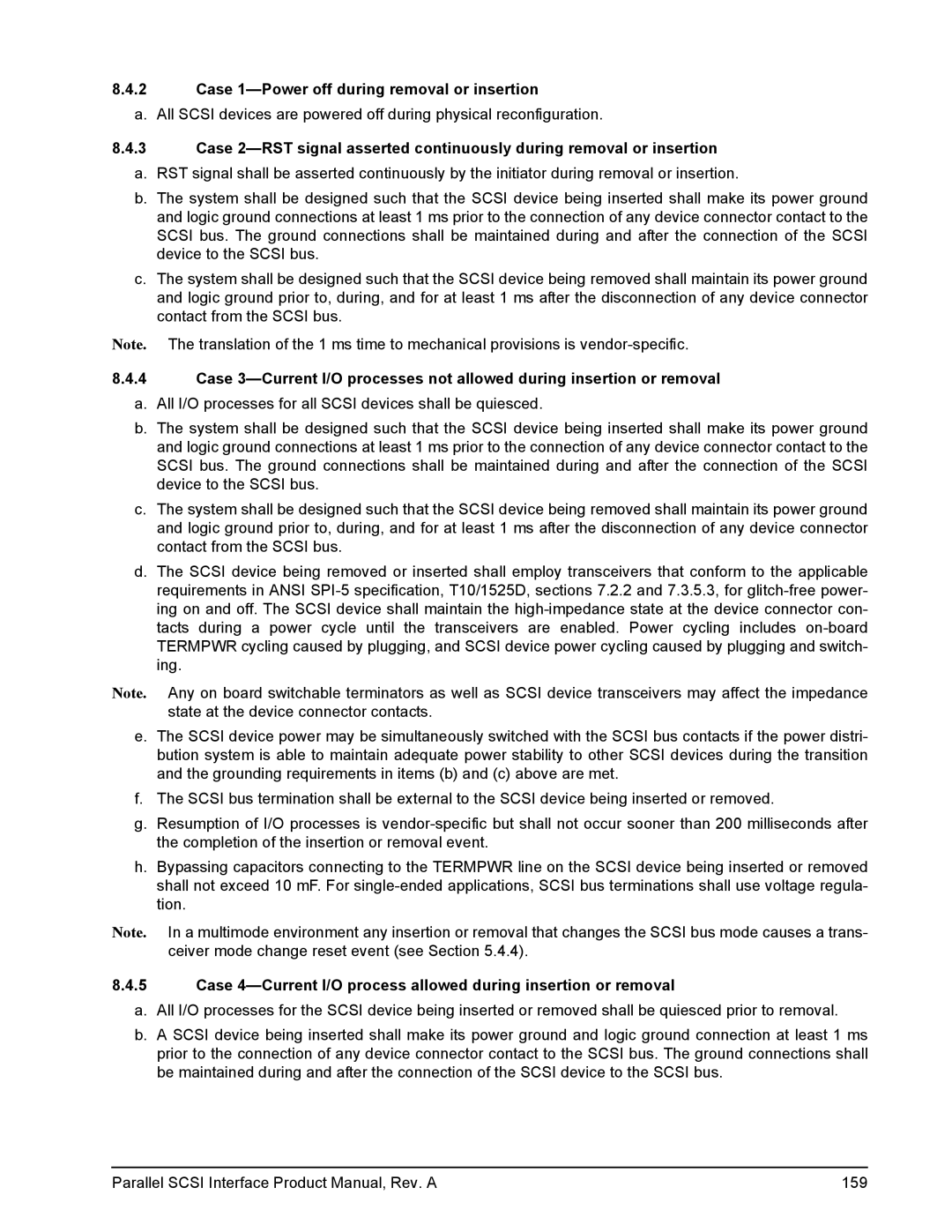8.4.2Case 1—Power off during removal or insertion
a.All SCSI devices are powered off during physical reconfiguration.
8.4.3Case
a.RST signal shall be asserted continuously by the initiator during removal or insertion.
b.The system shall be designed such that the SCSI device being inserted shall make its power ground and logic ground connections at least 1 ms prior to the connection of any device connector contact to the SCSI bus. The ground connections shall be maintained during and after the connection of the SCSI device to the SCSI bus.
c.The system shall be designed such that the SCSI device being removed shall maintain its power ground and logic ground prior to, during, and for at least 1 ms after the disconnection of any device connector contact from the SCSI bus.
Note. The translation of the 1 ms time to mechanical provisions is
8.4.4Case
a.All I/O processes for all SCSI devices shall be quiesced.
b.The system shall be designed such that the SCSI device being inserted shall make its power ground and logic ground connections at least 1 ms prior to the connection of any device connector contact to the SCSI bus. The ground connections shall be maintained during and after the connection of the SCSI device to the SCSI bus.
c.The system shall be designed such that the SCSI device being removed shall maintain its power ground and logic ground prior to, during, and for at least 1 ms after the disconnection of any device connector contact from the SCSI bus.
d.The SCSI device being removed or inserted shall employ transceivers that conform to the applicable requirements in ANSI
Note. Any on board switchable terminators as well as SCSI device transceivers may affect the impedance state at the device connector contacts.
e.The SCSI device power may be simultaneously switched with the SCSI bus contacts if the power distri- bution system is able to maintain adequate power stability to other SCSI devices during the transition and the grounding requirements in items (b) and (c) above are met.
f.The SCSI bus termination shall be external to the SCSI device being inserted or removed.
g.Resumption of I/O processes is
h.Bypassing capacitors connecting to the TERMPWR line on the SCSI device being inserted or removed shall not exceed 10 mF. For
Note. In a multimode environment any insertion or removal that changes the SCSI bus mode causes a trans- ceiver mode change reset event (see Section 5.4.4).
8.4.5Case
a.All I/O processes for the SCSI device being inserted or removed shall be quiesced prior to removal.
b.A SCSI device being inserted shall make its power ground and logic ground connection at least 1 ms prior to the connection of any device connector contact to the SCSI bus. The ground connections shall be maintained during and after the connection of the SCSI device to the SCSI bus.
Parallel SCSI Interface Product Manual, Rev. A | 159 |
